From Robert (ESA), 18 April, currently in the Lake District, UK
With all the excitement going on in the Arctic, one might think it’s business as usual back in Europe operating CryoSat’s main payload, SIRAL. Far from it; on top of the routine monitoring of CryoSat’s health, there have been a number of background activities going on over the last few months to assure the success of the Arctic campaign.
First of all, we need to make sure SIRAL is being commanded as expected. The science measurement mode commands are transmitted to the satellite about a week before the radar is operated.
The team at ESA very confident that the automatic commanding is correct – as it has been since the facility that generates the commands was brought into operation early May last year.
Nevertheless, it’s worth a check during the critical period of a validation campaign.
Also, there’s CryoSat’s orbital path to consider. Since the ground and air teams need to know to an accuracy of meters where the CryoSat ground track will be, it’s left to the experiment teams to determine this using the latest orbit predictions supplied from the Flight Dynamics Team based in ESA-ESOC, Germany.
The closer we do this to the CryoSat overpass, the more accurate the prediction is. Recently, there has been a lot of solar activity and this affects the accuracy of the prediction and how long it is valid for. It was therefore necessary to re-emphasise to the experiment teams the need to tune the air experiment flight plan as late as possible.
Furthermore, early last week it became clear that CryoSat was approaching its ‘reference orbit dead band zone’, which is an across track distance about the nominal reference for which CryoSat is kept to achieve its mission objectives. Ideally, one would want to avoid any maintenance manoeuvre to keep CryoSat as close as possible to its mission reference orbit. It became clear it was best to do this last Thursday to avoid a larger manoeuvre later in the campaign.
The first ground team activities with NASA and CryoSat under flights were planned for 15 and 17 April respectively, so it was a tough call for the Mission Manager to agree to the manoeuvre, albeit a necessary one.
Some nervousness persisted having received notification from Michael Studinger, Project Scientist for NASA’s Operation IceBridge, that the P-3 under flight had been performed on Friday 15 April. This was a feeling I last felt just 12 days after the CryoSat launch when the P-3 under flew the satellite. The nervousness was relinquished when the realtime orbit data showed that the P-3 had hit the post-manoeuvre CryoSat on the mark. Well done guys!
Back Europe’s warm and pleasant climate, it’s a good idea to see if CryoSat actually made the expected measurement, as this builds confidence and assists planning in the Arctic.
However, due to the location of the experiment, one has to wait several hours for CryoSat to orbit Earth a few more times and to transmit the SIRAL data to ground in Kiruna, Sweden. The image above shows that CryoSat was outside the large circle, which is the visibility range of the Kiruna ground station.
With the waiting over, the image below shows the raw SIRAL waveforms and that CryoSat and its support facilities have performed their task. The waveforms here show high-power (dark red), most likely where there is a crack or ‘lead’in the sea ice and where the open water acts almost like a mirror to the transmitted radar pulse. The plot gives an indication of the elevation of the surface. The data is not used in the context of science, but helps tell us what the instrument is doing at any particular moment.
The science teams now have to wait about a month for the science data to be processed with the very accurate precise orbit.
The same type of plots were generated for NASA P-3 under flights of CryoSat carried out on 17 March over sea ice and 27 March over the north of the Greenland before the campaign sea-ice activities kicked off in Alert last week.
So what does the processed CryoSat data look like for the pass of the sea ice north of Alert on 15 March?
Of course being impatient we would like to look at the CryoSat data as soon as possible. We can get a ‘quick look’, but it is not suitable for dedicated science analysis. In this, case the processing took place on a Mac in the Lake District – a remote part of the UK.
The figure shows the processed radar echoes and one can immediately see an improvement of the data quality and resolution compared with the figure above.
One can see, for example, the elevation is different by several meters based on the on-board orbit and the predicted orbit. This final processed data will be compared with the airborne and ground data by the validation teams to understand the errors in the CryoSat data and validate its results.
All in all, everything seems to be going to plan!
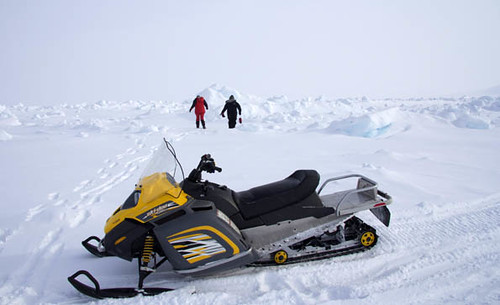

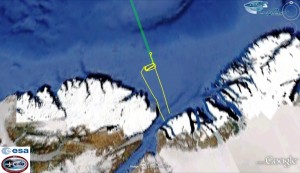
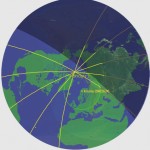
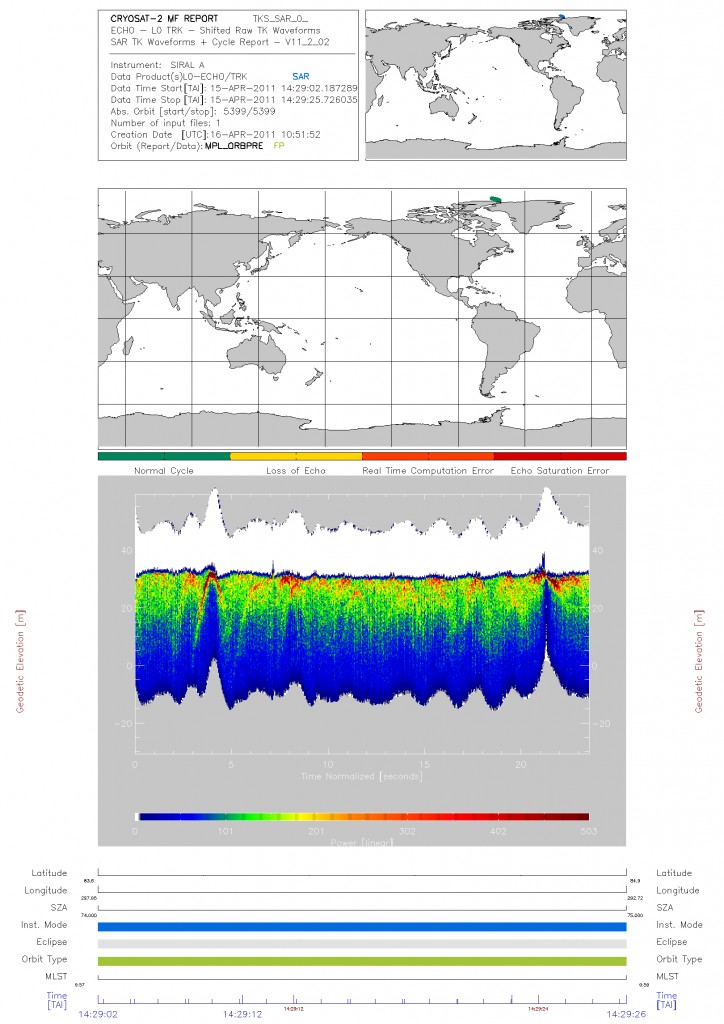
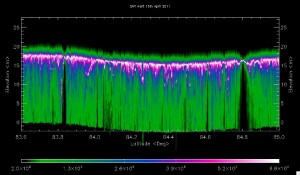
Discussion: 2 comments
Good stuff Rob!
I second that. Please keep us up-to-date on your progress.